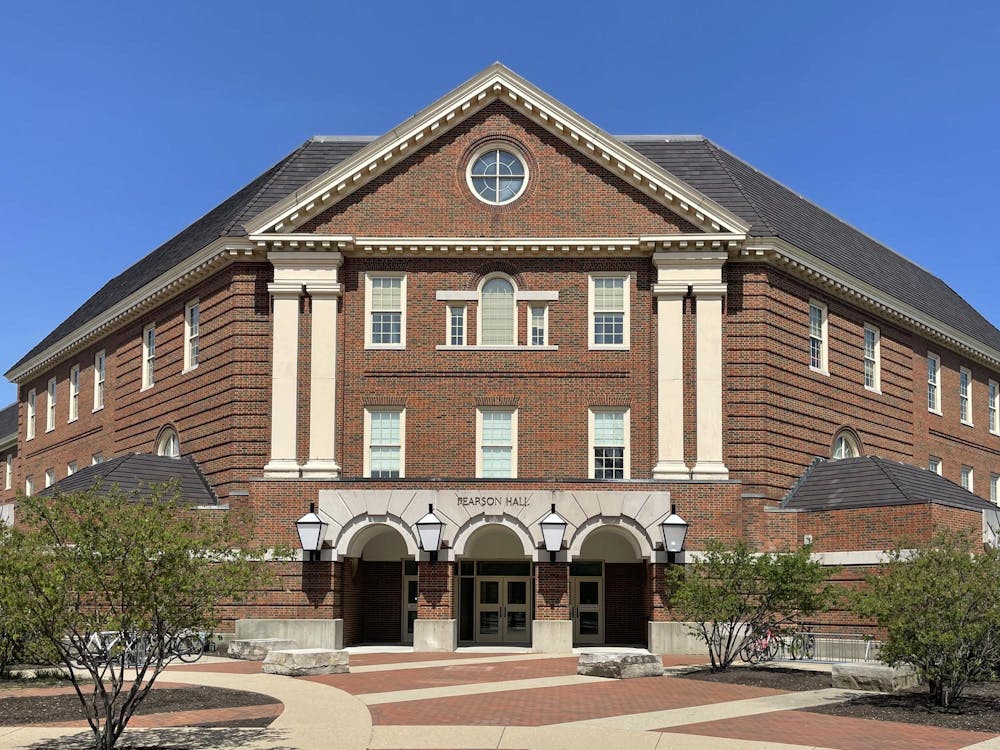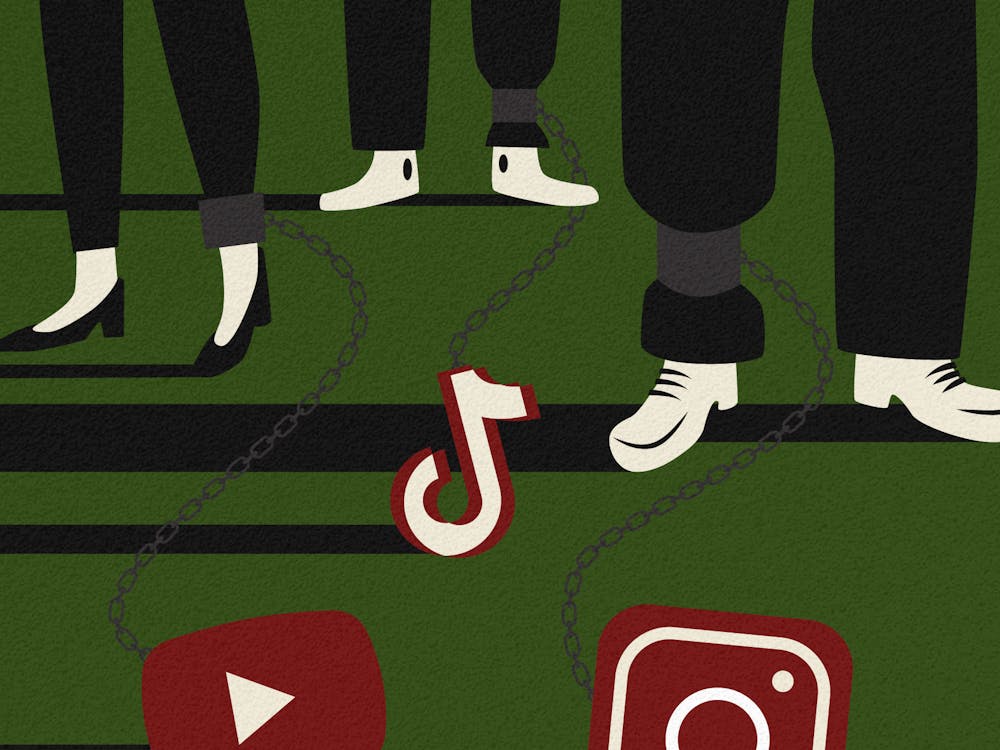A month ago, I attended Susan Ewing’s lecture on the inherent monumentality in her miniature art. From her dinner rings to her Prague-inspired stars, the idea that certain concepts could seem bigger than their literal size and could successfully translate into public installations was something that echoed in my mind.
I wondered, could the inverse be true? Is it possible for monuments to be minimized by the passage of time, through the eyes of their constant audience? Once I asked myself these questions, I started to see the art that lined the familiar walls in Oxford More specifically – and strangely – Miami University’s very own biological science building, Pearson Hall.
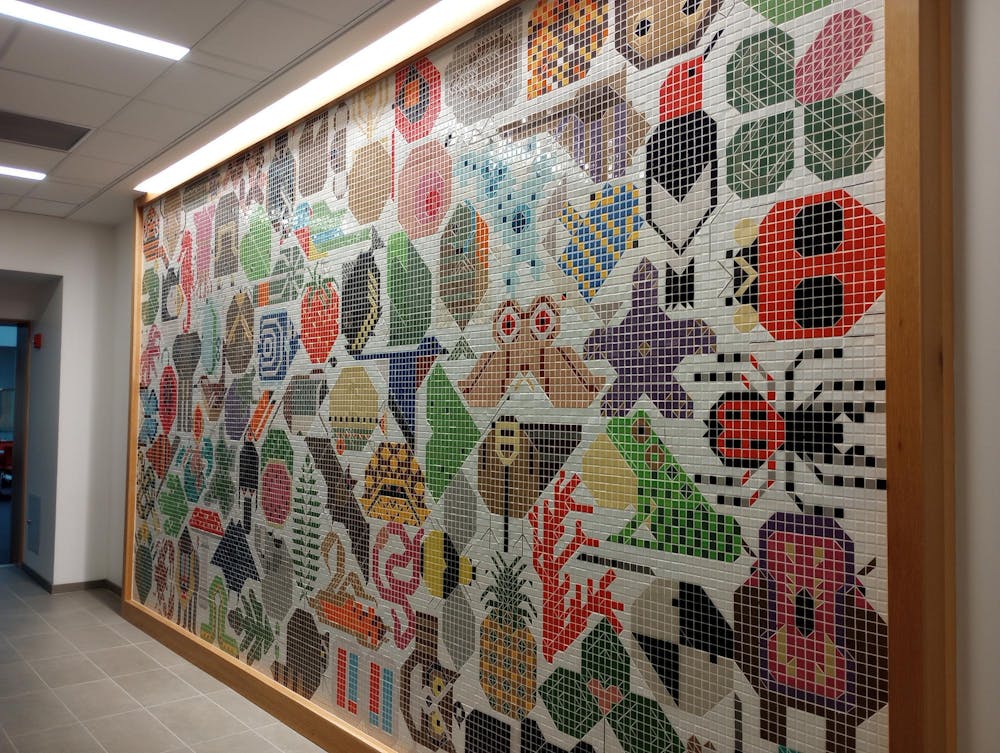
“Web of Life” is a floor-to-wall mosaic created by Charley Harper and incorporates animal subjects and geometric minimalism into the tiles.
“Web of Life” is the title of a floor-to-wall mosaic, created by Charley Harper and commissioned by Hardy Eshbaugh. Eshbaugh was familiar with Harper’s work in Cincinnati with “Untitled (American Wildlife),” sometimes referred to as “Tree of Life,” and had him emulate his themes of animal subjects and geometric minimalism for the then newly-built Pearson building. It was finally installed in 1986 and was moved in 2018 during Pearson’s massive renovation.
There’s a lot of attention to detail and homages stacked in these rows of one-inch ceramic tiles for the men who made Pearson possible. Dr. Paul Pearson is represented by a wood rat in the top left portion of the mural because of his research specific to the animal. A similar logic is applied to Eshbaugh, Karl Mattox and Don Cox, who are memorialized as a chili pepper, green alga and bacterium, respectively.
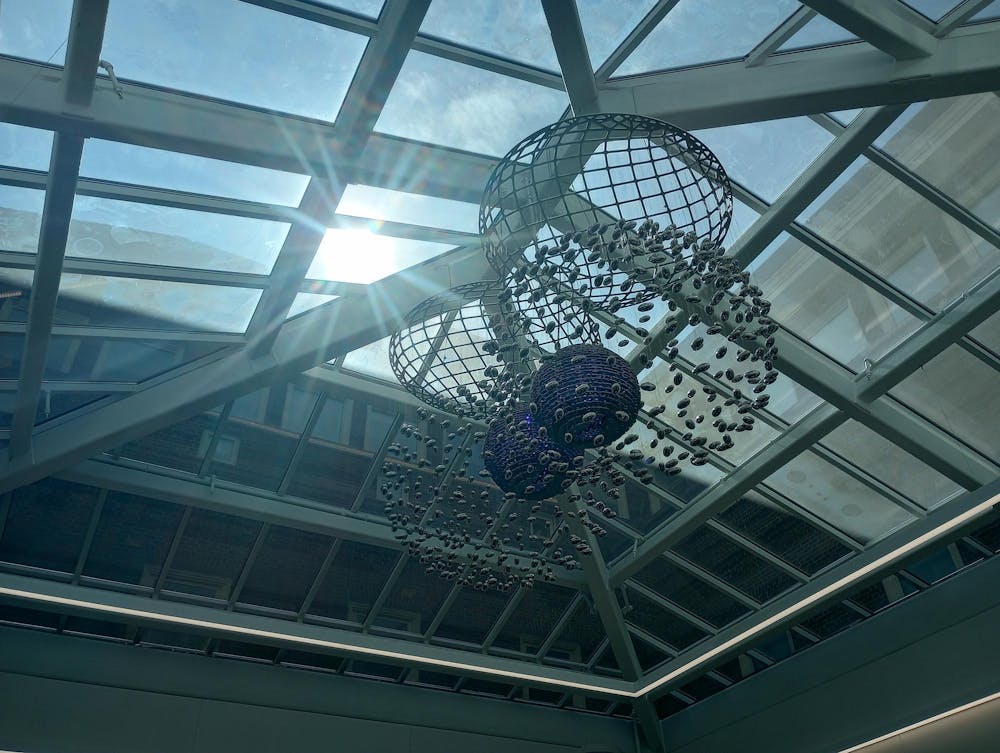
“Kytos,” a sculpture consisting of stainless steel, aluminum and LED lights within two spheres, was created by Cliff Garten.
“Kytos” by Cliff Garten was funded by Ohio’s Percent for Art program in 2023. The piece was constructed with stainless steel, aluminum and LED lights within two prominent spheres. The title of the sculpture is a Greek word that translates to “hollow, as a cell or container.” The popular medical prefix “cyto-” is derived from this word and is used to denote a cell.
There’s a certain brevity to the fixture as it relies on space to communicate its biological cell structure. The organelles that hover around the core are reminiscent of hermanite magnets that never touch. Even the structure of the cores themselves is layered and imprinted with little holes similar to the objects it's surrounded by.
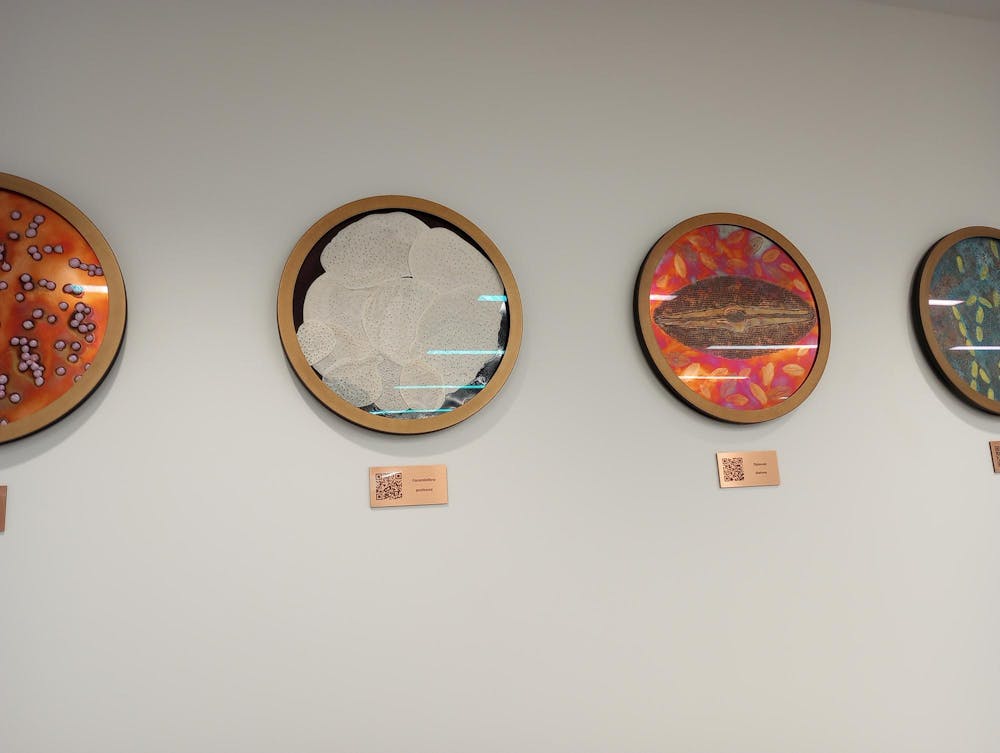
“Microorganisms” by Cheryl Safren consists of 22 framed microbes that showcase different reactants.
“Microorganisms” by Cheryl Safren was commissioned by the university and completed in 2021. It’s a semi-interactive artwork, with scannable QR codes under each copper-disk framed microbe. Twenty-two of these can be found between the first and second floors showcasing ebolavirus, physarum polycephalum (a slime mold), saccharomyces cerevisiae (species of yeast) and other reactants.
Educational content aside, the piece thrives on the appearance of various chemical interactions such as crystallization, which produces a unique texture. These chemical reactions also create a color phenomenon called interference colors. These colors are created by their reflection off the transparent oxide film on the copper’s surface, depending on the film’s thickness and where the light hits the surface.

The DNA sidewalks are a collaboration between 360 Architects and MKSK Designs.
Enjoy what you're reading?
Signup for our newsletter
The DNA sidewalks were constructed in 2008, through a collaboration between 360 Architects and MKSK Designs on the nearby plaza. This design won the 2009 Ohio Chapter of the American Society of Landscape Architects (OCASLA) Honor Award for its seamless and innovative incorporation into the campus. The polished pavements between Pearson and Garland are a subtle nod to our own biology, literally weaving across campus.
The line between science and the humanities might be thinner than people think. There’s an inherent beauty to microbiology and chemistry, one that students sit in front of without knowing how it came to be or how it might relate to their studies. The intersection isn’t obvious, and Miami is aware of this, letting the artworks fade into the background and exist with practicality.
While many new students may scoff at their humanities classes they’re required to take for the Miami Plan, personally, it’s what made my college experience real. From the conversations in my Latinx literature class last semester that explored the intricacies of our own biases to the reenactment skits I created in Greek and Roman Mythology, there was something there that was missing from my STEM-adjacent studies.
It was the small stories that created the history we study from, and the people behind the data we often reduce to numbers. Science may be the pursuit of truth and logic, but the humanities give us a reason why. So ultimately, if that human part in our sciences is what propels research, why not embrace it?
Next time you find yourself in Pearson, stop and appreciate what doesn’t have to be there.
Maureen Wilson is a first-year student majoring in English literature and minoring in creative writing. She is an opinion writer for The Miami Student and a senior staff writer at the Miami Regional Pulse News. She’s involved in MU Kababayan and Bridges Scholars, and she enjoys watching films in her free time.

